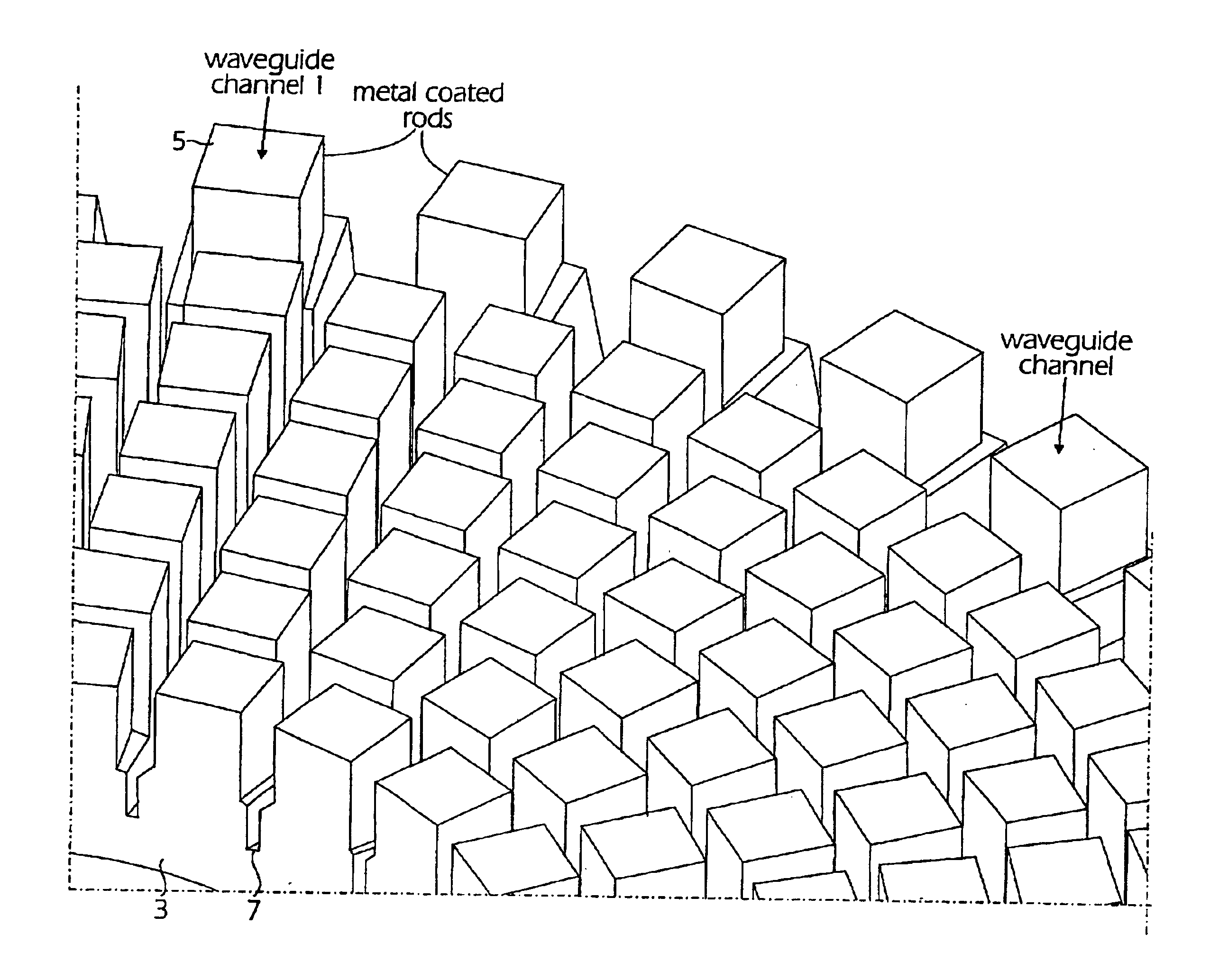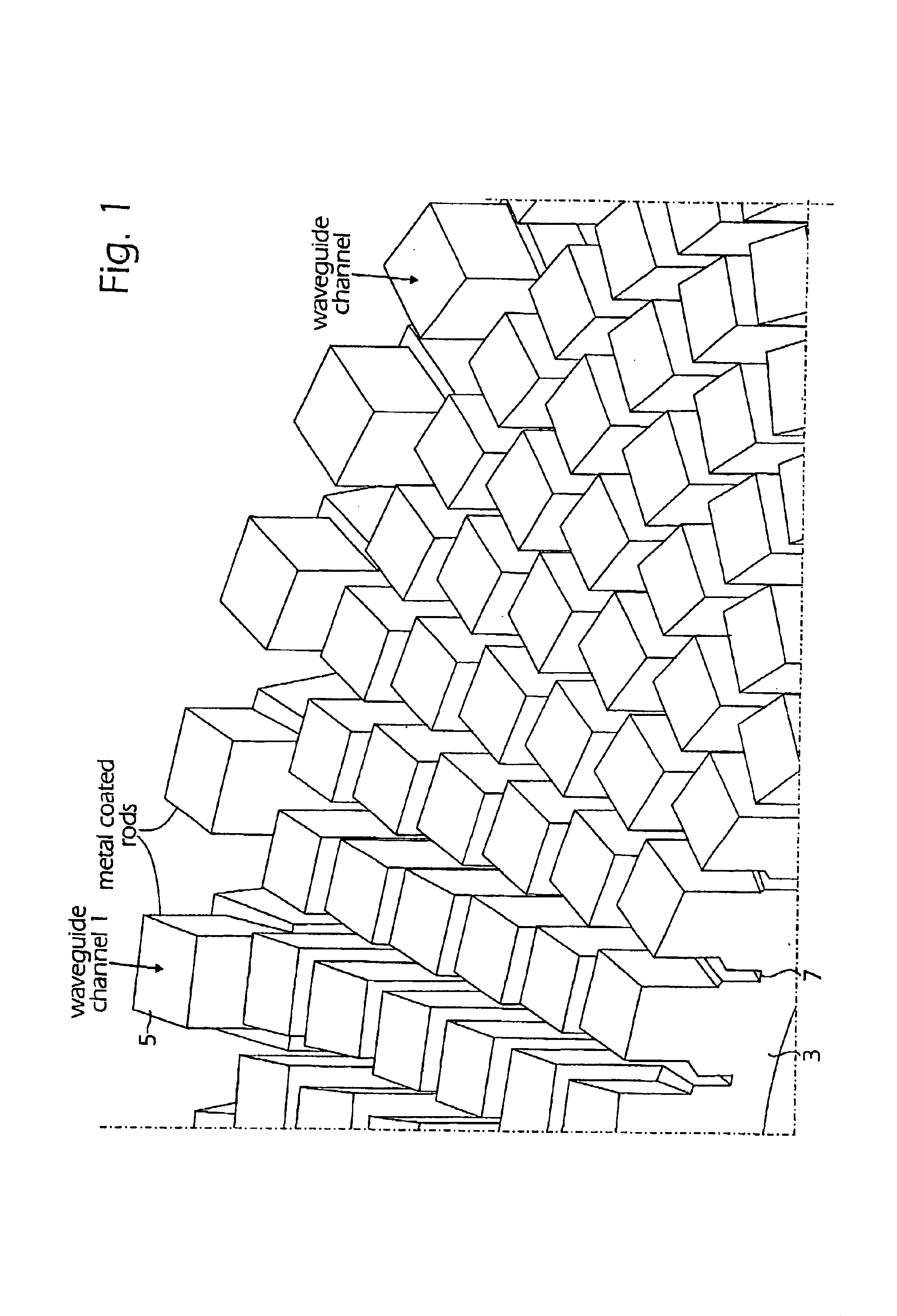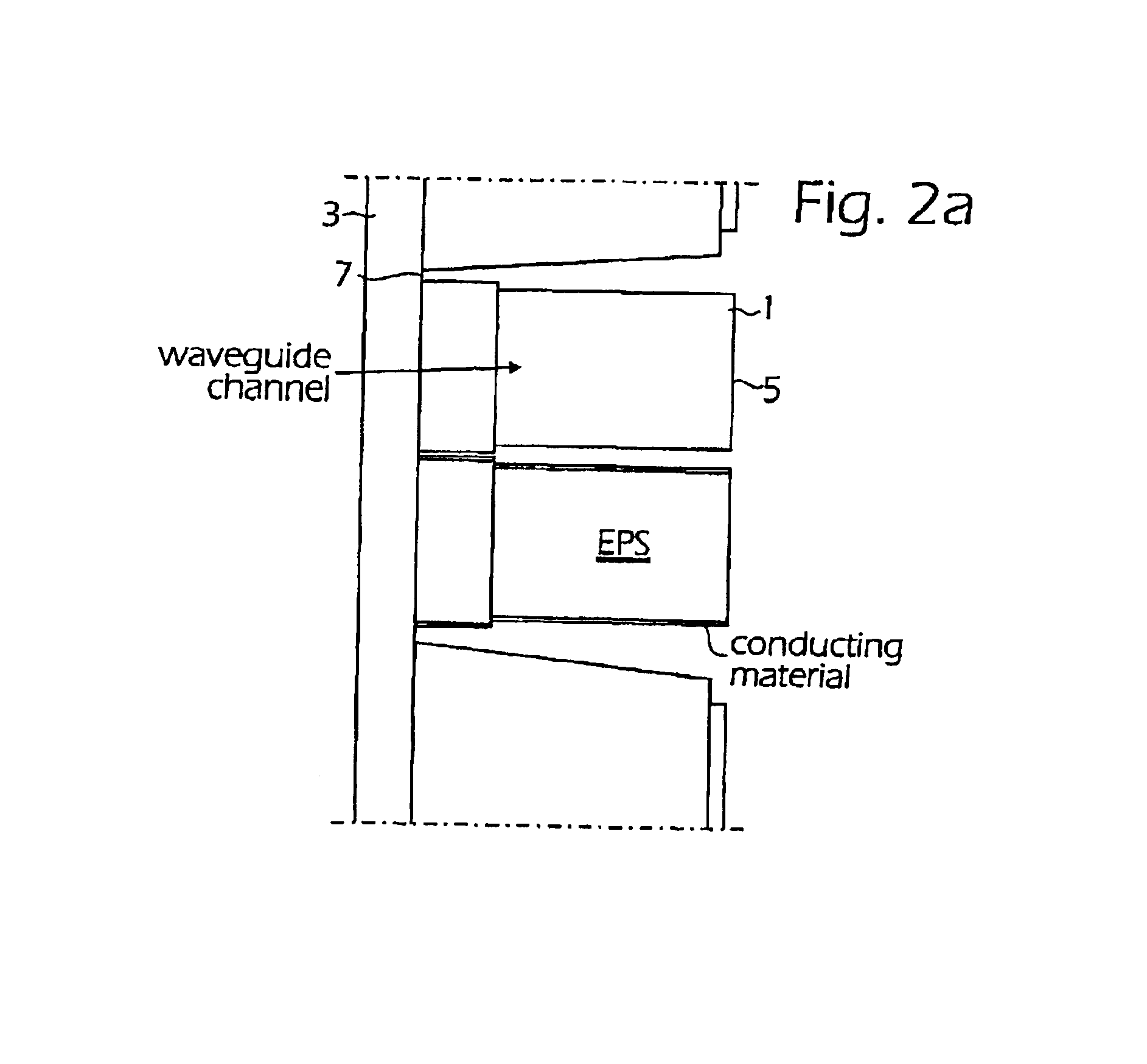Method of fabricating waveguide channels
a technology of waveguide channels and manufacturing methods, applied in waveguide type devices, basic electric elements, electrical equipment, etc., can solve the problems of inability to manufacture such long channels, inability to use manufacturing such long channels, and high manufacturing costs
- Summary
- Abstract
- Description
- Claims
- Application Information
AI Technical Summary
Benefits of technology
Problems solved by technology
Method used
Image
Examples
Embodiment Construction
Materials exist which have such a low attenuation of electromagnetic waves that they can approximately be considered as air in spite of the fact that they in other respects have characteristics of solids. An example of such a material is EPS (Expanded PolyStyrene) that has an attenuation coefficient smaller than 0.1 dB / dm. This material can be easily used for manufacturing bodies having very varying shapes. In FIG. 1 is in a perspective view shown a portion of a waveguide antenna made from such a material having an insignificant attenuation for electromagnetic radiation, see also the part cross-sectional view of FIG. 2a. The waveguide antenna is formed from rods 1 that project to one side from a for example flat base plate 3 keeping the antenna together to form one unit. The rods 1 are on their side surfaces coated with an electrically conducting layer, see the description hereinafter. The end surfaces 5 of the rods have no such coating but in contrast there is a conducting coating ...
PUM
| Property | Measurement | Unit |
|---|---|---|
| Shape | aaaaa | aaaaa |
| Electrical conductor | aaaaa | aaaaa |
| Dimension | aaaaa | aaaaa |
Abstract
Description
Claims
Application Information
 Login to View More
Login to View More - R&D
- Intellectual Property
- Life Sciences
- Materials
- Tech Scout
- Unparalleled Data Quality
- Higher Quality Content
- 60% Fewer Hallucinations
Browse by: Latest US Patents, China's latest patents, Technical Efficacy Thesaurus, Application Domain, Technology Topic, Popular Technical Reports.
© 2025 PatSnap. All rights reserved.Legal|Privacy policy|Modern Slavery Act Transparency Statement|Sitemap|About US| Contact US: help@patsnap.com



